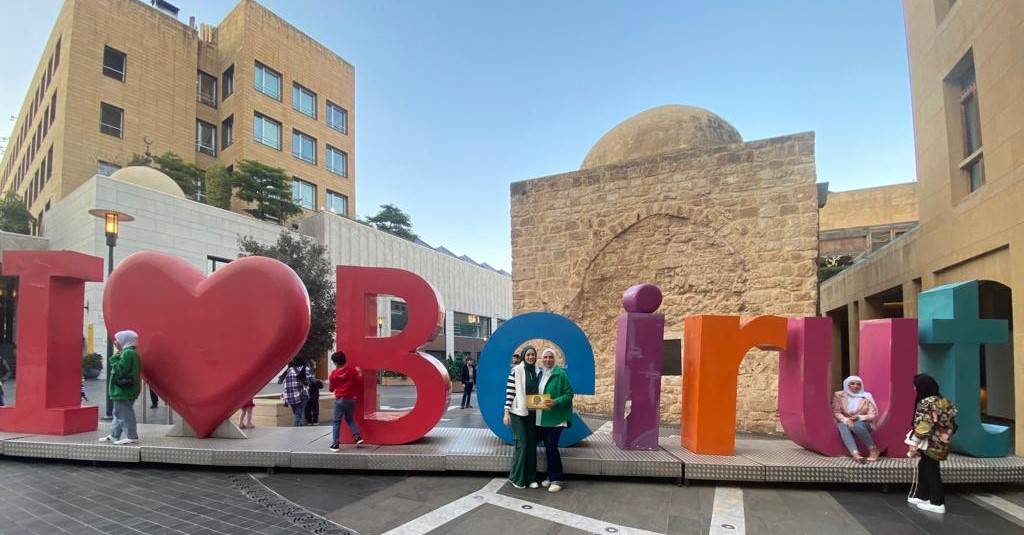Beirut is the capital and largest city of Lebanon. As of 2014, Greater Beirut has a population of 2.5 million, which makes it the third-largest city in the Levant region. The city is situated on a peninsula at the midpoint of Lebanon's Mediterranean coast. Beirut has been inhabited for more than 5,000 years, and was one of Phoenicia's most prominent city states, making it one of the oldest cities in the world (see Berytus). The first historical mention of Beirut is found in the Amarna letters from the New Kingdom of Egypt, which date to the 14th century BC.
Beirut is Lebanon's seat of government and plays a central role in the Lebanese economy, with many banks and corporations based in the city. Beirut is an important seaport for the country and region, and rated a Beta + World City by the Globalization and World Cities Research Network. Beirut was severely damaged by the Lebanese Civil War, the 2006 Lebanon War, and the 2020 massive explosion in the Port of Beirut. Its cultural landscape underwent major reconstruction.
Beirut was settled over 5,000 years ago, and there is evidence that the surrounding area had already been inhabited for tens of thousands of years prior to this. Several prehistoric archaeological sites have been discovered within the urban area of Beirut, revealing flint tools from sequential periods dating from the Middle Palaeolithic and Upper Paleolithic through the Neolithic to the Bronze Age.
Beirut I (Minet el-Hosn) was listed as "the town of Beirut" (French: Beyrouth ville) by Louis Burkhalter and said to be on the beach near the Orient and Bassoul hotels on the Avenue des Français in central Beirut. The site was discovered by Lortet in 1894 and discussed by Godefroy Zumoffen in 1900. The flint industry from the site was described as Mousterian and is held by the Museum of Fine Arts of Lyon.
Beirut II (Umm el-Khatib) was suggested by Burkhalter to have been south of Tarik el Jedideh, where P.E. Gigues discovered a Copper Age flint industry at around 100 metres (328 feet) above sea level. The site had been built on and destroyed by 1948.
Beirut III (Furn esh-Shebbak), listed as Plateau Tabet, was suggested to have been located on the left bank of the Beirut River. Burkhalter suggested that it was west of the Damascus road, although this determination has been criticized by Lorraine Copeland. P. E. Gigues discovered a series of Neolithic flint tools on the surface along with the remains of a structure suggested to be a hut circle. Auguste Bergy discussed polished axes that were also found at this site, which has now completely disappeared as a result of construction and urbanization of the area.
Beirut IV (Furn esh-Shebbak, river banks) was also on the left bank of the river and on either side of the road leading eastwards from the Furn esh Shebbak police station towards the river that marked the city limits. The area was covered in red sand that represented Quaternary river terraces. The site was found by Jesuit Father Dillenseger and published by fellow Jesuits Godefroy Zumoffen, Raoul Describes and Auguste Bergy. Collections from the site were made by Bergy, Describes and another Jesuit, Paul Bovier-Lapierre. Many Middle Paleolithic flint tools were found on the surface and in side gullies that drain into the river. They included around 50 varied bifaces accredited to the Acheulean period, some with a lustrous sheen, now held at the Museum of Lebanese Prehistory. Henri Fleisch also found an Emireh point amongst material from the site, which has now disappeared beneath buildings.
Beirut V (Nahr Beirut, Beirut River) was discovered by Dillenseger and said to be in an orchard of mulberry trees on the left bank of the river, near the river mouth, and to be close to the railway station and bridge to Tripoli. Levallois flints and bones and similar surface material were found amongst brecciated deposits. The area has now been built on.
Beirut VI (Patriarchate) was a site discovered while building on the property of the Lebanese Evangelical School for Girls in the Patriarchate area of Beirut. It was notable for the discovery of a finely styled Canaanean blade javelin suggested to date to the early or middle Neolithic periods of Byblos and which is held in the school library.
Beirut VII, the Rivoli Cinema and Byblos Cinema sites near the Bourj in the Rue el Arz area, are two sites discovered by Lorraine Copeland, Peter Wescombe, and Marina Hayek in 1964 and examined by Diana Kirkbride and Roger Saidah. One site was behind the parking lot of the Byblos Cinema and showed collapsed walls, pits, floors, charcoal, pottery and flints. The other, overlooking a cliff west of the Rivoli Cinema, was composed of three layers resting on limestone bedrock. Fragments of blades and broad flakes were recovered from the first layer of black soil, above which some Bronze Age pottery was recovered in a layer of grey soil. Pieces of Roman pottery and mosaics were found in the upper layer. Middle Bronze Age tombs were found in this area, and the ancient tell of Beirut is thought to be in the Bourj area.





 And then Add to Home Screen.
And then Add to Home Screen.